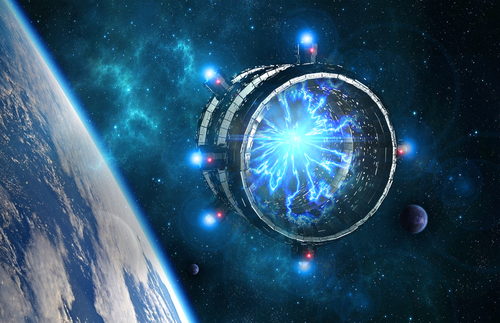Interstellar Tunnels
The concept of interstellar tunnels, also known as wormholes, has captured the imagination of scientists, writers, and dreamers alike. These hypothetical passages through space-time offer a tantalizing possibility: the ability to travel vast cosmic distances in a fraction of the time it would take using conventional means.
The Science of Wormholes
The idea of wormholes originates from the field of general relativity, which describes how gravity affects the fabric of space-time. In 1935, physicists Albert Einstein and Nathan Rosen proposed the existence of “Einstein-Rosen bridges,” which we now refer to as wormholes. These theoretical structures are like tunnels connecting two separate points in space-time, potentially allowing for rapid travel between distant regions of the universe.

Mathematically, wormholes can be described by solutions to the equations of general relativity. The most famous type is the Schwarzschild wormhole, also known as the Einstein-Rosen bridge. Another well-known example is the traversable wormhole, which was further developed in theoretical models by physicists Kip Thorne and Michael Morris. Unlike black holes, which are characterized by their event horizons and singularities, traversable wormholes would allow passage without being torn apart by extreme gravitational forces.
The Challenges
Despite the intriguing theoretical foundation, there are significant challenges to the existence and practical use of wormholes. One major issue is stability. Most solutions to the equations of general relativity suggest that wormholes would require “exotic matter” with negative energy density to remain open. This exotic matter is hypothetical and has not been observed in nature. Without it, a wormhole would likely collapse quickly, rendering it unusable.
Additionally, the creation and maintenance of a wormhole would require immense amounts of energy. The technology to harness such energy is far beyond our current capabilities. Even if we could generate this energy, the risk of unknown consequences, such as destabilizing space-time or causing catastrophic events, cannot be ignored.
Implications for Space Travel
If wormholes could be created and stabilized, they would revolutionize space travel. The distances between stars, which are currently measured in light-years, could be traversed almost instantaneously. This would open up new possibilities for exploration, colonization, and communication. Instead of taking thousands of years to reach a neighboring star system, humans could travel to distant galaxies in a single leap.

Wormholes in Popular Culture
Wormholes have been a staple of science fiction for decades, appearing in countless books, movies, and TV shows. They provide a convenient plot device for overcoming the vast distances of space. In the movie “Interstellar,” directed by Christopher Nolan, wormholes play a central role in humanity’s search for a new habitable planet. The depiction of wormholes in this film was grounded in scientific theories, with input from physicist Kip Thorne to ensure accuracy.
Another classic example is the Stargate franchise, where wormholes created by ancient devices called Stargates allow instant travel between different planets. These portrayals capture the sense of wonder and possibility that wormholes evoke, even if the science behind them remains speculative.
Conclusion
Interstellar tunnels, or wormholes, represent one of the most captivating ideas in theoretical physics. While they remain firmly in the realm of hypothesis, their potential to revolutionize our understanding of space travel continues to inspire. As our knowledge of the universe grows and technology advances, the dream of traversing the cosmos through these enigmatic tunnels might one day become a reality. Until then, wormholes will remain a fascinating subject for scientific inquiry and imaginative storytelling.



